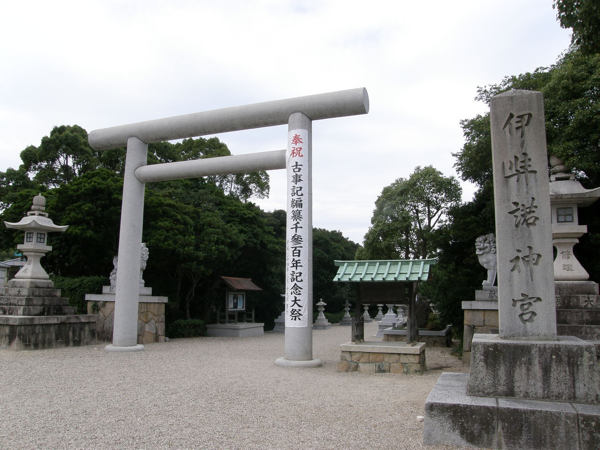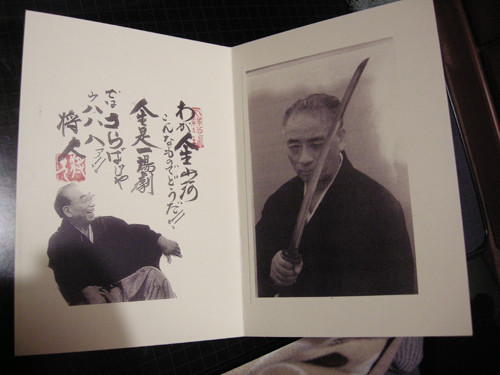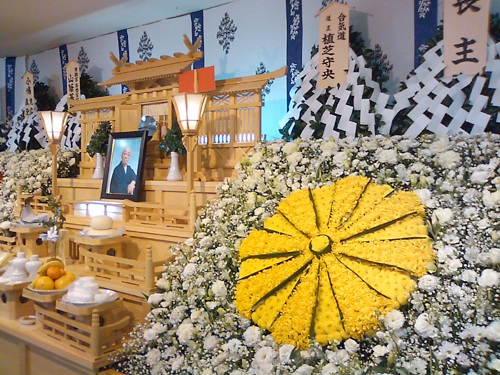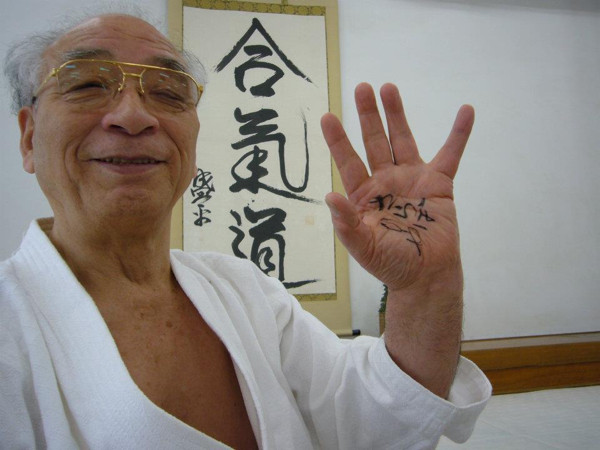Morihei Ueshiba en de Weg van het Kruis [Dutch Version]

Ingang van Izanagi Jingu op Awaji IslandDe vlag is ter ere van de viering van het 1300 jarig bestaan van de Kojiki
*This is a Dutch translation of the article "Morihei Ueshiba and the Way of the Cross – Izanagi and Izanami cross the Floating Bridge of Heaven", courtesy of Ernesto Lemke of Seikokan Aikido.
Herinner je je Izanagi en Izanami nog uit "Aikido en de Zwevende Brug van de Hemel"?
Zo niet, Izanagi en zijn echtgenote (en tegelijkertijd zijn zuster) Izanami hadden de opdracht van de Goden van Japan om op de Zwevende Brug van de Hemel (Ame no Uki Hashi/ 天之浮橋) te staan en de Japanse archipel te creëren.
Maar….je zou eigenlijk eerst het andere artikel moeten lezen aangezien de rest van wat ik te vertellen heb alleen via die context duidelijk wordt.
Hier is alvast een grappig weetje: in de Nihongi, het oudste boek van de Klassieke Japanse Geschiedenis (op de Kojiki na) worden deze Goden de “Goden van In en Yo” (陽神陰神) genoemd. O-Sensei was hiervan op de hoogte en verwees regelmatig naar In en Yo in termen van Izanagi en Izanami.In ieder geval, ik hoop dat je je ze nog kunt herinneren want zij waren een veel voorkomend element in de uitspraken en geschriften van Aikido Grondlegger Morihei Ueshiba.
Zoals je wellicht weet stonden de mannelijke en vrouwelijke God op de Zwevende Brug van de Hemel en roerden met de juwelen speer (Ama no Nuboko/ 天の沼矛) in de zee waarop zij een maalstroom creëerden. Druppels zout water vielen van de speer en vormden het eerste eiland (Onogoro Shima/ 淤能碁呂島) waarop de heilige wezens neerdaalden van de Brug naar de aarde.




